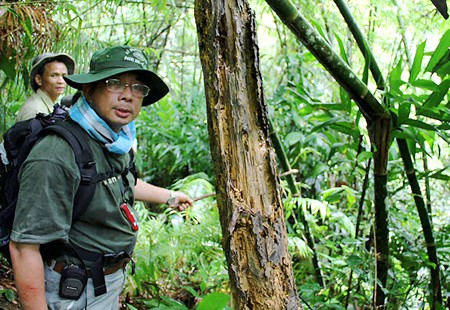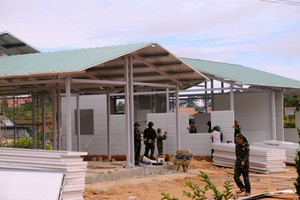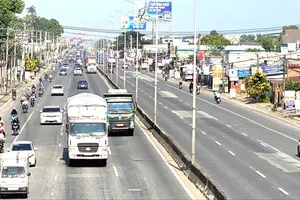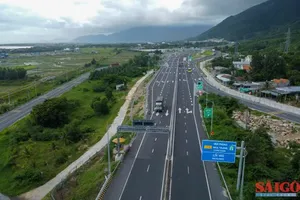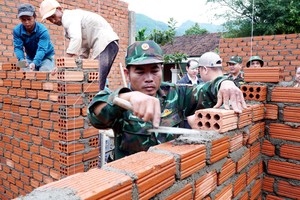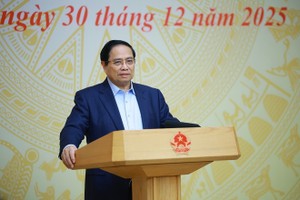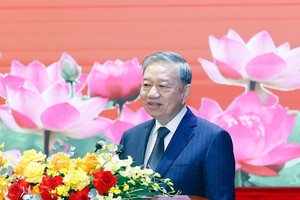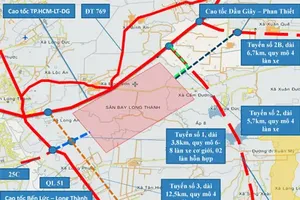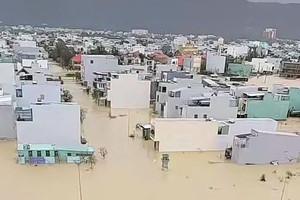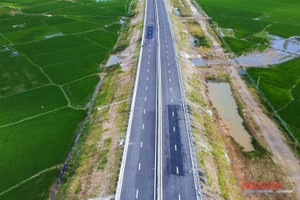At the end of a 20 day science seminar on October 26 in
Scientists objected to the building of dams by the 6 and 6A hydro power plants in
Scientists said that 14 hydro power plants are already located along the main stream of the
Authorities in the southern
"We will present data today to the Dong Nai Province Party Committee, describing the negative impact of the 6 and 6A power plant proposals to the Government," said Vo Van Chanh, deputy chairman of the Department of Natural Resources and Environment in the Province.
Speaking at a conference held yesterday by the department, Chanh said that the plant would affect both the environment and the economy of the province.
The plants were to be built on the upper reaches of the
As per the Prime Minister's national power strategy plan, the projects were scheduled to begin operations by 2015.
"We admit that the plants will help to ensure power security, but they will also create a negative impact, as we have outlined in our report," Chanh said.
The plants will affect the national park, which is located mostly in
They would also limit the biodiversity of the local forest and create hindrance for forest protection.
The presence of the plants will not enable the park to receive World Heritage status from UNESCO, he said.
Tran Van Thanh, the park's director, said the park submitted its application for the second time in September to UNESCO.
"The Bau Sau crocodile pond, habitat of a large population of the Indochina crocodile, is unique in itself. This is the only site where crocodiles live right in the middle of a primary forest," he said.
Other scientists said that by allowing entry of the power plants, illegal loggers stand to benefit as forest trees in the park will be cut.
Dr Vu Ngoc Long, director of the Centre for Biodiversity and Development, said the plants would destroy the habitat of a wide range of rare species, including the Indochina crocodile, the endangered Normascus gabriellace, the endangered Orchidantha vietnamica and a newly discovered flora named Camellia longii.
The plants would change the hydrological conditions and natural flow of the river, resulting in water supply shortage, flooding during the rainy season and draught in the dry season.
A report by Prof Le Huy Ba , Director of the HCMC-based Environment Management and Scientific Technology Institute said the plants would not affect the water supply for people, agriculture or industry in the province, nor increase salination.
However, Lam Dinh Uy, a coordinator of the Viet Nam River Network, pointed out that Phuoc's report referred only to water volume and did not include hydrological changes to the river. Other scientists criticized the report's research findings.
Chanh added that the plants would ruin the livelihoods and traditional culture of local ethnic minorities.
"I'm not sure the investor of the plants would bear the social impact. The ethnic minority groups would be driven away from their homes and land," said Dr Long.
Chanh also said that the plants construction should be regulated by national laws on forest protection, water resources and biodiversity, and should be considered under the context of climate change.
Many of the scientists said that the case should be submitted to the National Assembly as Code 7 in Vietnamese Law on Bio-diversity.
This law requires approval by the assembly for any construction that reclaims more than 50ha of national parkland.
Earlier, the Ministry of Natural Resources and Environment and several scientists discovered that the investor of the plants, Duc Long Gia Lai Group, had handed in improper and incorrect environmental impact assessed documents.
The documents were found to be altered copies of other environmentally assessed documents.
Hoang Van Thong of the Department of Natural Resources and Environment Protection in the Province said the construction of too many power plants on one river would have a serious adverse impact.
The Ministry of Natural Resources and Environment will conduct inspections of power plants in the north later this year and in the central and southern regions by next year.
